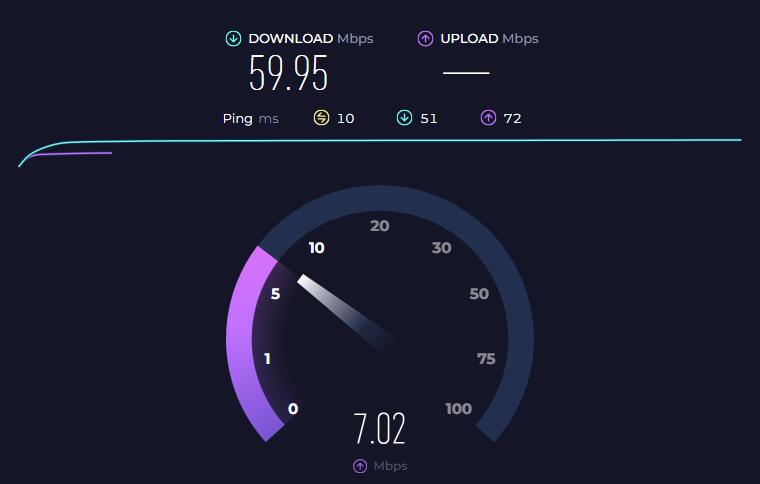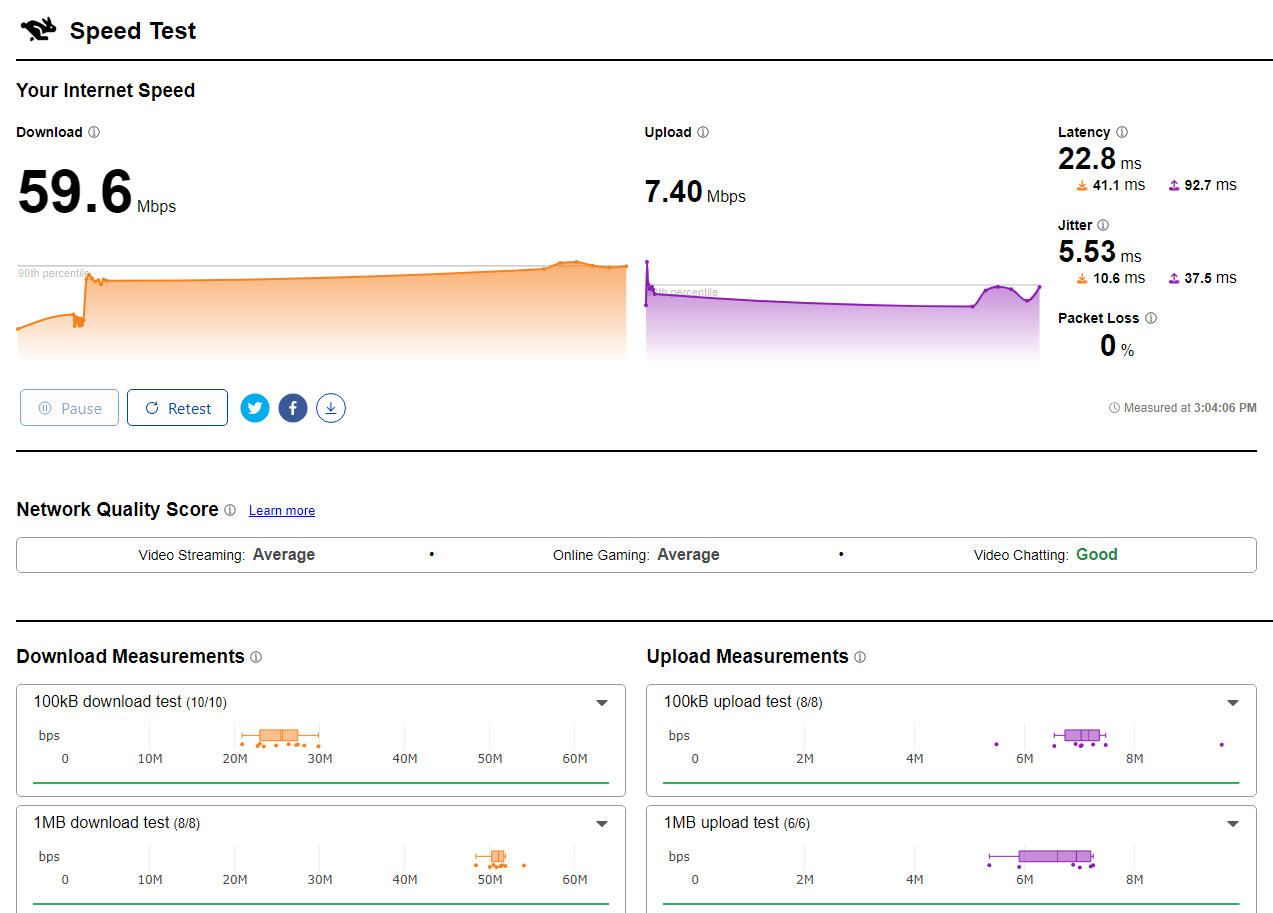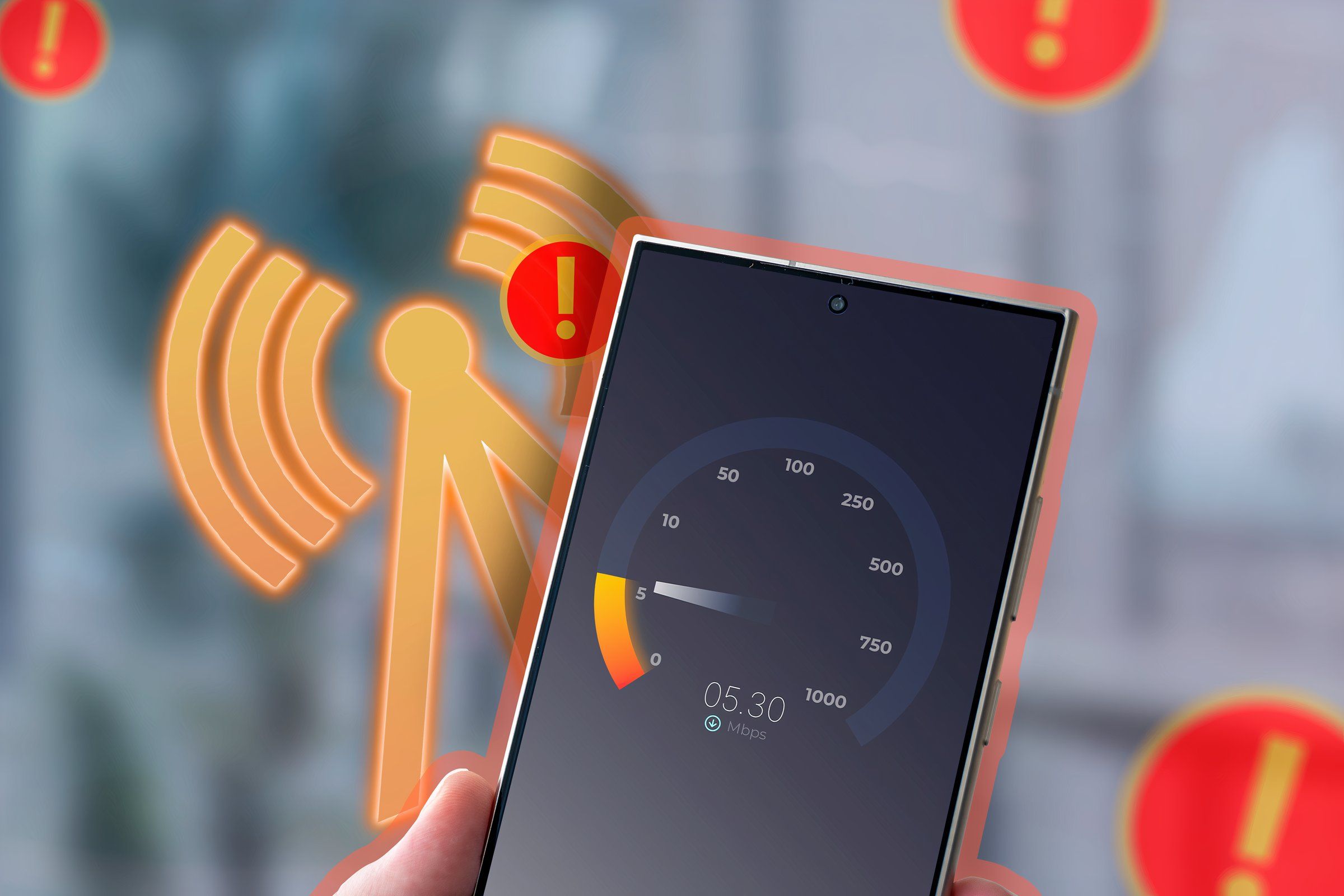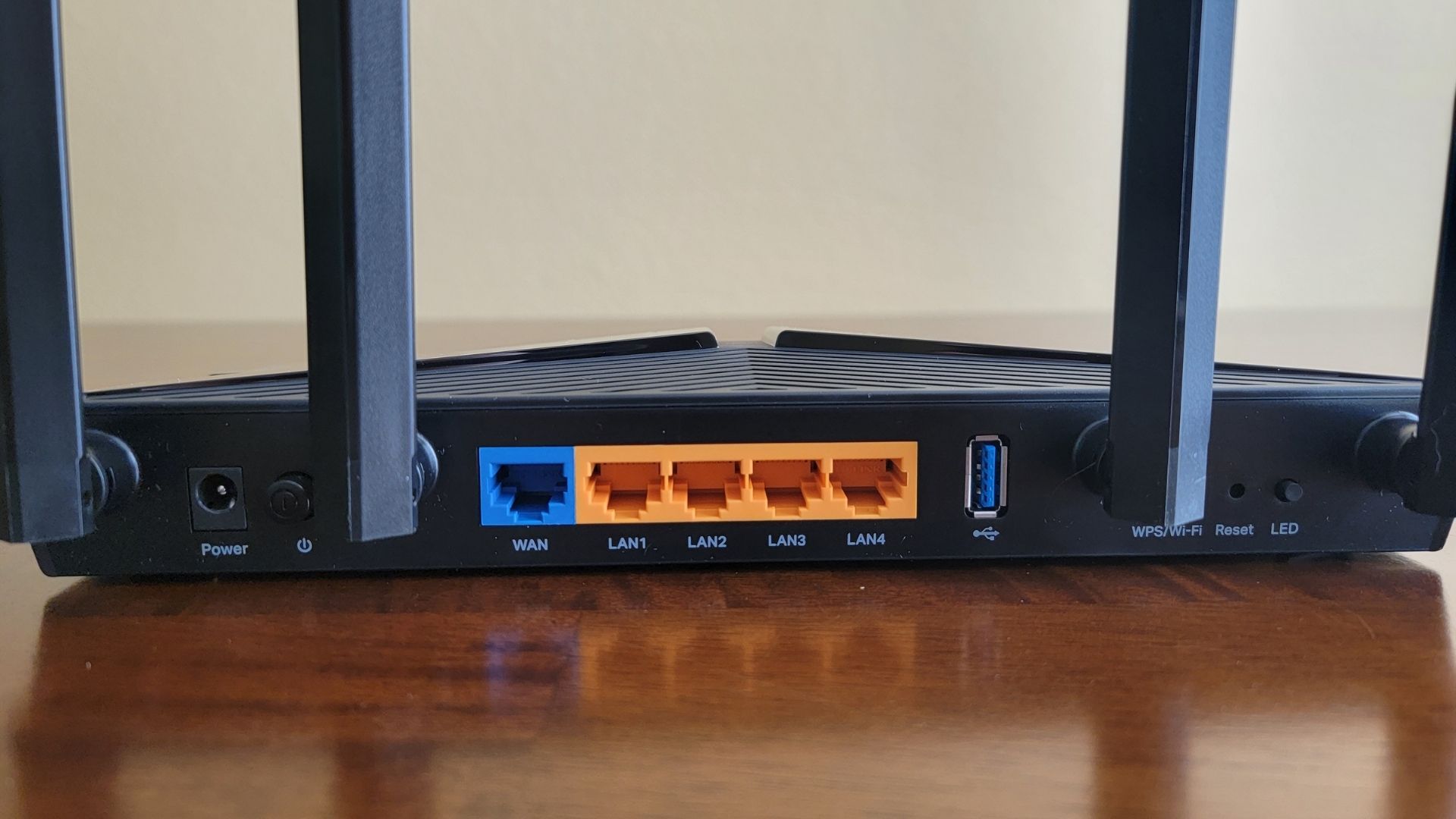Key Takeaways
- A typical speed test measures ping, download, and upload speeds.
- Speed tests can confirm actual internet speeds, and confirm if you’re getting the speeds you pay for.
- The accuracy of speed tests varies by server location and other factors, like network usage and connection type.
Speed tests are a quick way to see just how fast your internet is. ISPs promise “up to” a certain speed in optimal conditions, but a speed test will confirm how fast (or slow) your connection is in a real-world scenario.
What is a Speed Test?
An internet speed test is the best way to get an idea of how fast your connection is right now. The service you connect to can limit your download and upload speeds based on your internet plan, local congestion, any throttling rules it has, and so on.
The catch is that your Internet Service Provider (ISP)’s promises nearly always include the phrase “up to.” This gives an ISP wiggle room—if it promised you “up to 30Mbps,” and you consistently get around 28Mbps, then the company can say it’s kept its promise. But if you see 10Mbps, then you’re not getting what you pay for, and it’s time to call your ISP.
A speed test measures your ping and download and upload speeds. Measuring the latter two is essential because most ISPs make separate promises for download and upload speeds. Usually, the download speed features prominently, but if you dig into the details, the ISP typically specifies a slower upload speed for each level. For instance, one of our local ISPs offers a plan with a 500Mbps download speed but only a 125Mbps upload speed.
How a Speed Test Works
When you start a speed test, multiple things occur. First, the client determines your location and the closest test server to you. This part is important; a server that’s closer to you usually provides the best results. Most speed tests, like Ookla’s Speedtest.net, give you the option to change the server. With the test server in place, the Speed Test sends a simple signal (a ping) to the server, and it responds. The test measures that roundtrip in milliseconds.
After the ping is complete, the download test begins. The client opens multiple connections to the server and attempts to download a small piece of data. At this point, two things are measured: how long it took to grab the fragment of data and how much of your network resources it used.
If the client detects you have room to spare, it opens more connections to the server and downloads more data. The general idea is to tax your internet connection and see how much it can do simultaneously.
Imagine your internet service as a highway with a speed limit. Opening additional connections is like adding more lanes to the highway. The speed limit hasn’t changed, but more cars can pass through the same space at a faster rate; thus, the 50th car will arrive sooner using a four-lane highway than it would on a two-lane.
Once the client determines it has the correct connections to test your internet service, it downloads additional chunks of data, measures the amount downloaded in the time allotted, and presents a download speed. Next is the upload test. It’s essentially the same process as the download test but in reverse. Instead of pulling data from the server to your PC, the client uploads data from your PC to the server.
Are Speed Tests Accurate?
Speed tests sound simple, but measuring the speed of your connection accurately is much harder than it might seem at first glance. Consider the first step of the process: choosing a test server. The closest server is often incredibly close, perhaps even in the same city. That proximity is an optimal situation, as data doesn’t have as far to travel. Businesses know that proximity makes a difference, and that’s why some, like Netflix, use a content delivery network to bring the data closer to you.
However, most servers aren’t geographically close to you. In fact, most are located far away, sometimes across the country or in another country. So, while your speed test shows incredibly fast streams, you might find that downloading a program is very slow if the server hosting the data is far away. In such scenarios, your speed test results reflect a faster performance than real-world usage.
The difference in server locations is why you are likely to see different speed results when trying different tests, like Ookla’s, Netflix’s, or Cloudflare’s. Your ISP might also offer a speed test, like Comcast, Spectrum, or AT&T. However, you probably shouldn’t rely on an ISP-generated speed test. Their tests are optimized for ideal conditions, as they use servers close to you that are often maintained on the same ISP network you’re testing from. That means you’ll get much faster results compared to a third-party speed test. It’s fine if you just want to brag about how great your ISP is, but it’s bad for getting an idea of your real-world speeds.
Remember, in step two of the earlier testing process, the client attempts to open additional connections to maximize network usage. If you’re already taxing your network, the speed test can’t fully take advantage of your resources. For instance, if you test while streaming Netflix or downloading a large video game update, your results will likely be lower compared to testing under idle conditions.
How you’re connected and which devices you’re testing on also affect the results. A PC connecting to the router with a high-quality Ethernet cable should have a faster speed result than a Wi-Fi-connected phone. This is because Wi-Fi is generally slower and less stable than Ethernet, though Wi-Fi 7 could come close. Results can also vary on different devices, even if they’re using the same connection.
How to Get the Most Accurate Results
Getting accurate test results depends on what you intend to measure. Do you want to see if your ISP is genuinely providing the speeds it promised? Then, go for optimal conditions. Use an Ethernet-connected device, choose the test server closest to you, and turn off anything that’s taxing the internet connection (like a streaming service).
You might even want to reboot your router and modem before running a speed test to ensure they run the best they can. If your router has a built-in speed test, use that instead of a browser test. Doing so removes some of the hoops the process has to jump through.
However, if you want results closer to real-world performance, use a browser or app test. Bypassing the router test should let you pick a server farther away. If you regularly have one or two video or audio streams going, start those before starting the internet speed test.
Ultimately, no matter which steps you take or how you measure the speed, you can’t get a perfectly accurate result that mimics real-world scenarios. However, you can get a good enough result to either satisfy your curiosity or check in on the speeds promised by your ISP.




